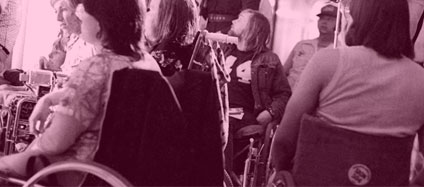Overview of strategy and tactics from Tavaana
Five Steps to Tactical Innovation
1. Identify the problem
2. Build a common vision and goal
3. Define the terrain (Using Tactical Map and Spectrum of Allies tools)
Identify relationships around the identified social problem
Identify allies and opponents on a continuum
4. Explore and select tactics
5. Develop a plan of action for implementation
Learner Objectives
1. Identify the problem and goal from case examples of human rights tactics.
This objective prepares you to take step one and step two in the five step process to connect strategy and tactics for more effective action — Identify the problem and Build a common vision. Part of knowing yourself is to understand what problems and issues do you believe are important to address? What is standing in the way of a better society, community, neighborhood, family?
Another part of knowing yourself is to understand your values and your dreams of a better society, a better neighborhood, a better village. Are these values widely shared? Can you imagine how things could be better for many people, not just yourself? What is standing in the way of this goal now? What are the strengths and weaknesses you bring to the desire for change? What support or allies might you have in wanting change? In this lesson you will start by identifying a problem to work on, then move to the goal or vision of change.
Before you start to think about your own problem and goal, we will practice identifying the problem and goal from case examples selected from the book: New Tactics in Human Rights: a Resource for Practitioners, published by the Center for Victims of Torture. Before you go to the tactical case studies, read Violence Prevention Tactic for a sample tactic and test yourself. Follow the directions at the end as you read the five brief case studies.
2. Choose a key problem (issue) to work on during the training.
After you have practiced identifying and describing the specific problems and goals that other activists have developed tactics to impact, it is time to choose a problem you care about and a goal of change you might have. During the course you will use your example as you practice the steps involved in tactical innovation.
Note: This goal is likely to be different from your organization’s mission, but it is helpful to keep that mission in mind to ensure that the strategies and tactics you choose are consistent with it.
Be prepared to share your choice of problem and goal (vision) at the second webinar.
3. Develop a self-care plan.
Part of knowing yourself is to know how to take care of yourself so that you can do the work that may take a long time, may involve some risks, and may take a lot of work. Each person is different in what they need to stay strong and what the conditions are like for their work. After the second webinar, we ask you to complete a self-care plan for yourself.
Lesson 2 Syllabus
Readings
1. Introduction to Lesson 2
2. Violence Prevention Tactic example
3. Readings – Case Studies from New Tactics Book listed in the assignment below
Pre-Webinar Assignment:
See “Lesson 2 Exercise in defining problems and goals”
1. Identify problems and goals that specific tactics address
Use this form (Tactical Case Study form) to identify what you think is the specific problem and the specific goal of each of five tactics described briefly in the New Tactics Notebook:
Community Mediation (Nepal)
With the Flick of a Switch (Turkey)
Going Door to Door to Find Allies (South Africa)
Legal Education in Rural Areas (Thailand)
Making Your Point with Mapping (Lebanon)
2. Choose your own specific problem and goal to work on during the course
3. Read and use “Choosing a Problem and Goal form” to help you decide what is important to you that you would like to change.
Fill in the boxes with one sentence describing your choice of specific problem and one sentence describing the goal you would like and send the form to Nancy Pearson for review at nt.tavaana@gmail.com.
Join the webinar, ready to talk about your chosen problem.
Webinar
Date and time: Wed. Feb. 9, 2011, 8pm Tehran time
Nancy Pearson: Step One and Two: “Know Yourself” — Identifying the problem and vision you want to work on; and the importance of practicing self-care.
Post Webinar Assignment
1. Read Self Care: Caring for your most valuable resource from the New Tactics Book
2. Use the Self Care Plan form to help you develop a plan for yourself for self-care.
3. Send your plan to Nancy Pearson for review at nt.tavaana@gmail.com.
___
Attribution List “The Center for Victims of Torture – New Tactics in Human Rights Project” as the source for any information used in this document as well as any original attribution provided in this document.
Noncommercial The information is not to be used for profit.
Share Alike If you alter, transform, or build upon this work, you may distribute the resulting work only under the same, similar or a compatible license. And share your alterations, etc with CVT-New Tactics to continue to build the body of knowledge.







